7 Steps Not to Skip When Setting Up a Compliant Medical Waste Program At Your Dental Facility
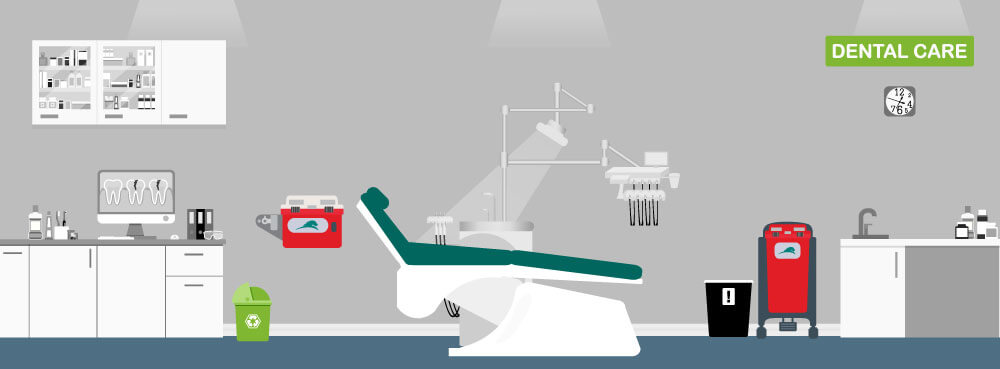
Like other medical providers, dental facilities must deal with a wide range of medical or hazardous wastes that they must handle with caution and dispose of properly. There are multiple types of specialized waste, and your practice must handle each according to specific state and federal regulations or face potential fines and regulatory action.
More importantly, however, improper disposal of medical or hazardous waste can result in significant harm to people and the environment. Sharps waste for example, which dental practices generate on a daily basis, have the potential to spread disease and cause harm to staff and the public.
Proper disposal of these specialized wastes can reduce risks, prevent unnecessary costs, and protect people and the environment. Here is an overview of what dental practices need to know to set up a compliant medical waste program for their own facilities.
TOPICS WE WILL COVER:
4 / Cleaning and Sterilizing Chemicals
8 / Best Practices for Dental Facility Medical Waste
9 / Next Steps for Effective Dental Waste Disposal
Hazardous Waste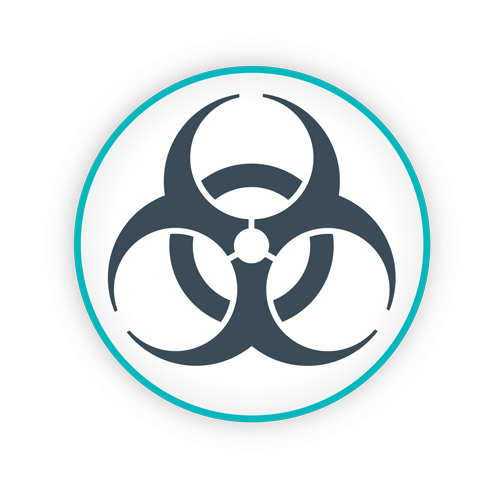
Hazardous waste is often one of the most misunderstood categories of waste, and many people assume that it simply includes chemical and toxic waste. However, this is untrue, and in fact, virtually all businesses will generate hazardous waste at some point, including dentistry practices.
Many common items, including fluorescent tubes, electronic displays, and certain cleaning chemicals, are, in fact, classified as hazardous waste, and your dental facility must dispose of this waste through an approved facility. For dental practices, there are several industry-specific materials they must dispose of as hazardous waste as well, including dental amalgam and x-ray wastes.
Dental Amalgam
Dental amalgam is an incredibly useful restorative material that contains several metals including silver, copper, and mercury as a chemical binder. Though its silver content may make it an environmental hazard, its presence of mercury is what makes amalgam so dangerous. One study has found that dentistry facilities are responsible for approximately 14% of mercury released into wastewater, and both federal and state regulators have responded by issuing regulations regarding its capture and disposal.
While dental practices continue to phase out the use of mercury in fillings, it is still used (and being removed from patients’ mouths), which means it’s important for staff to be trained in its proper disposal. Employees should never dispose of dental amalgam in the garbage, and as of December 2016, the EPA has issued regulations requiring dental facilities to utilize amalgam separators to prevent contamination of wastewater. Your employees need to store collected amalgam in a tightly sealed container and dispose of it through a waste management service for recycling and/or disposal.
X-Ray Waste
Similarly, X-ray wastes such as used X-ray fixers, film, and in some cases, developers contain a high silver content above five mg/l, which qualifies it as hazardous waste. With this in mind, it’s important to dispose of this waste as hazardous waste. In addition, X-ray packets and lead aprons contain lead foil that can cause soil and groundwater contamination and are hazardous wastes.
Cleaning and Sterilizing Chemicals
Another type of hazardous waste that dental practices may often generate includes chemicals used to disinfect and sterilize dental equipment, such as concentrated hydrogen peroxide, glutaraldehyde, and formaldehyde. The federal government regulates many of these chemicals due to their potential for harm to water systems and the environment. Your facility should make sure they never dispose of these chemicals in a drain. Instead, like these other hazardous wastes, they should be collected in a secure RCRA hazardous waste container and disposed of through an approved hazardous waste management service.
Sharps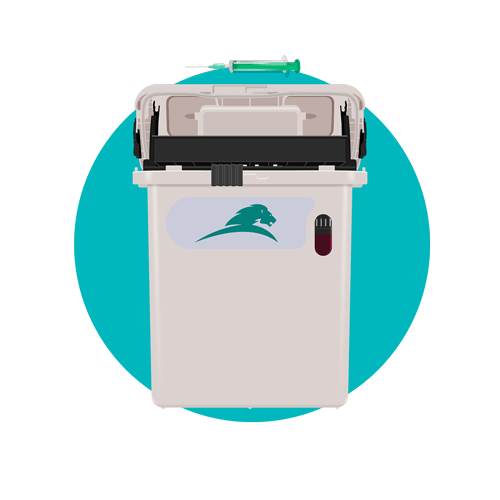
Sharps are one of the most recognizable medical wastes as well as the most dangerous. Items such as needles, broken capsules, ortho wires, scalpel blades, and endo files can contain residual medication, blood, and other substances. Due to their risk of pricking or sticking to those who come into contact with them, they pose a significant threat of harm. Dispose of sharps properly in secure sharps containers such as Daniels Sharpsmart. A reusable container with a tamper-proof lid, Sharpsmart prevents overfilling with an innovative internal design that allows for proper stacking of sharps.
Be sure to clearly label sharps containers and place them in an easily reachable spot away from high-traffic areas and light switches where dental personnel can reach them as needed. Then, once the sharps containers are full, your facility needs to dispose of them properly with a biohazardous medical waste disposal provider.
Biohazardous Waste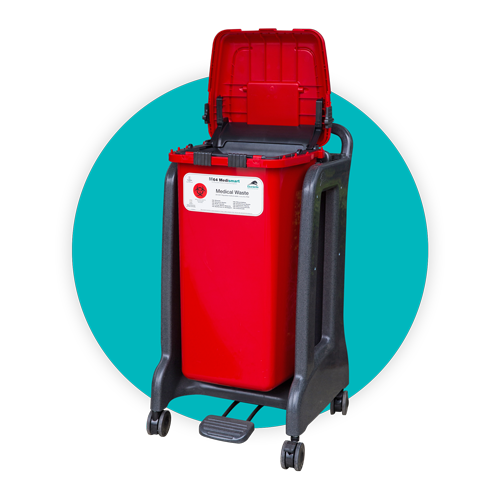
In addition to sharps, dental facilities also generate a smaller quantity of regulated medical waste (RMW), such as items contaminated with blood and other bodily fluids that may contain pathogens. Your facility must dispose of this type of waste according to federal guidelines.
Most dental practices will place this type of waste in the RMW container, often nicknamed “red bag” due to its red coloring. This practice helps to distinguish it from other types of waste and the traditional use of bags for disposal.
However, these bags are often at risk of puncture, leaks, or rupture, which can expose personnel to infectious materials. Personnel that will handle this type of waste must be thoroughly trained in safe practices. However, Daniels Medismart reusable containers eliminate these risks, with a solid, reusable container that can prevent spillage, leakage, and cross-contamination.
Pharmaceutical Waste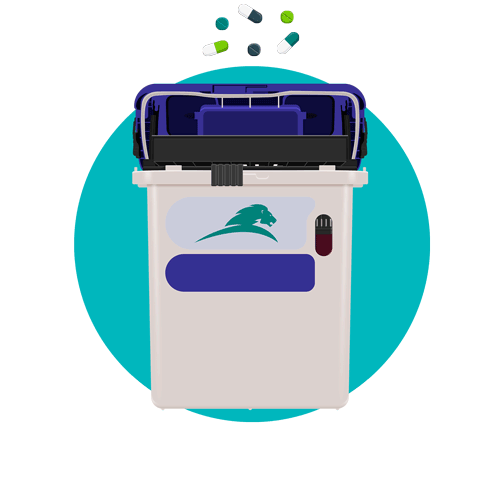
Every dental facility will have some amount of pharmaceuticals in stock, and some are likely to remain unused and expire. It is essential that your facility dispose of these expired pharmaceuticals carefully due to the risk of theft and misuse. In some cases, personnel may be able to dispose of these medications down the drain or in the regular waste stream.
However, in many cases, you may need to dispose of pharmaceuticals off-site in a secure manner. You can divide these medications into two categories: non-hazardous or hazardous pharmaceutical waste.
Most facilities can store non-hazardous pharmaceutical waste in a secure manner to prevent tampering and misappropriation and yet still dispose of it in a more affordable manner. These pharmaceuticals can be contained and transported in a secure container such as Daniels Pharmasmart system until their final destruction, ensuring absolute security.
To learn more about hazardous pharmaceutical waste, start here.
Best Practices for Dental Facility Medical Waste
Any medical waste disposal program is only as strong as its practitioners, and this means that it should start with training staff on how to identify, separate, and collect medical waste into approved and clearly labeled containers. Facilities should have clear safety plans in place and regularly audit how they handle medical waste in the workplace to take corrective action whenever necessary. It is also important to partner with a medical waste collection, disposal, and treatment provider to ensure your waste management practices protect the environment and comply with government regulations.
Next Steps for Effective Dental Waste Disposal
Dental facilities produce a significant amount of medical waste, and it is essential that this waste be disposed of properly. As a leader in your practice’s dental facility, you’ll need to set up strategies to identify, collect, and dispose of these wastes in an appropriate manner so as to comply with all applicable regulations and avoid fines as well as possible harm to people and the environment. Daniels Health medical waste management service can help your dental facility do this by working with you to select waste disposal procedures that will meet the needs of your unique facility and help you to maintain the highest safety and environmental standards while being efficient and cost-effective.
Let's Talk!
Your time is valuable, and we don’t want to play hard to get. You can either phone us directly on the details listed on our contact page, or feel free to fill out this short form and one of our team members will get back to you as quickly as possible.
